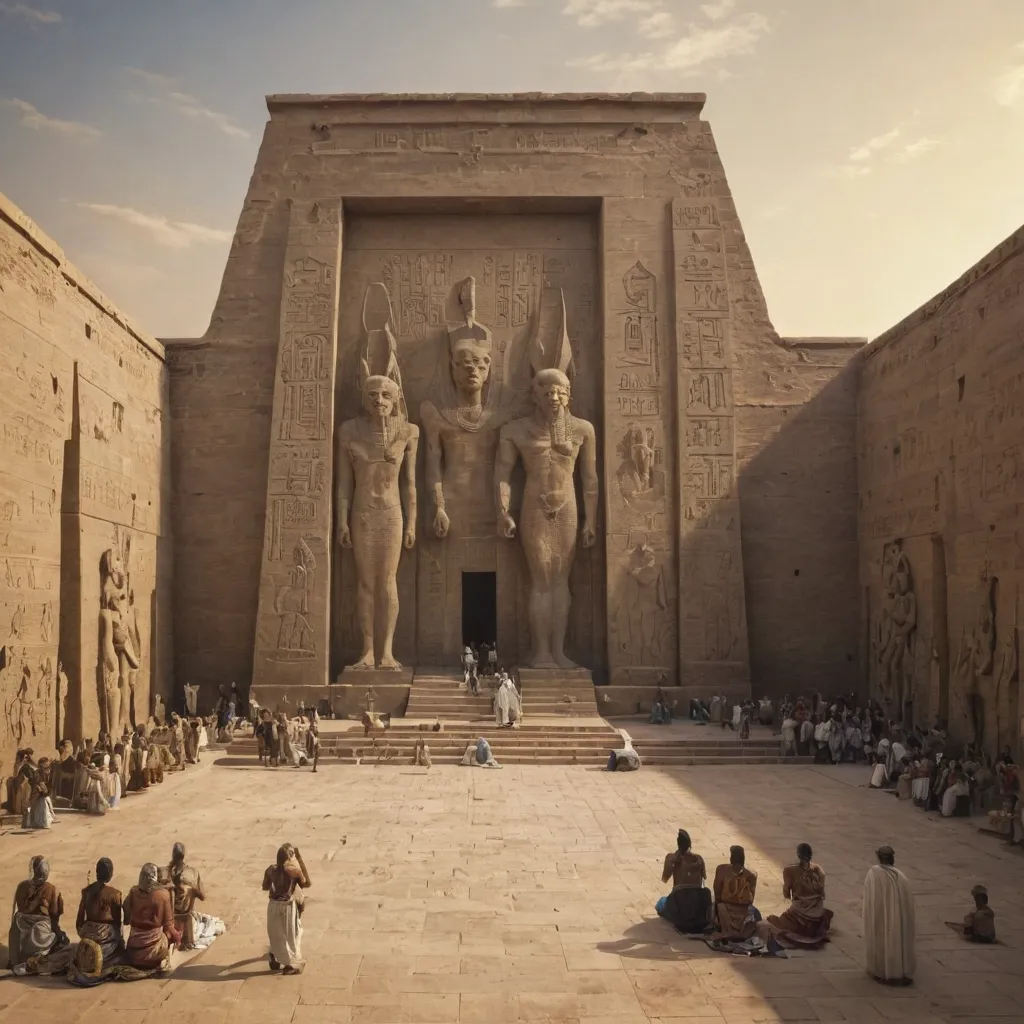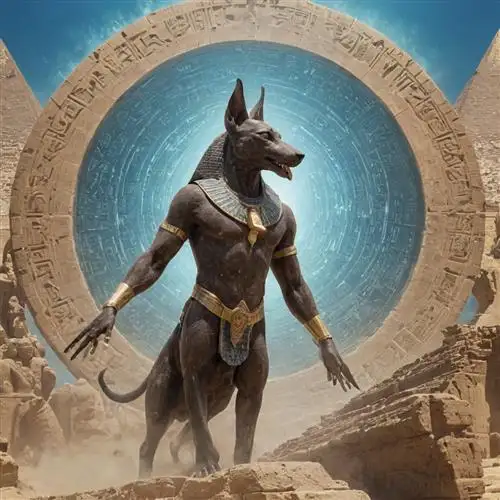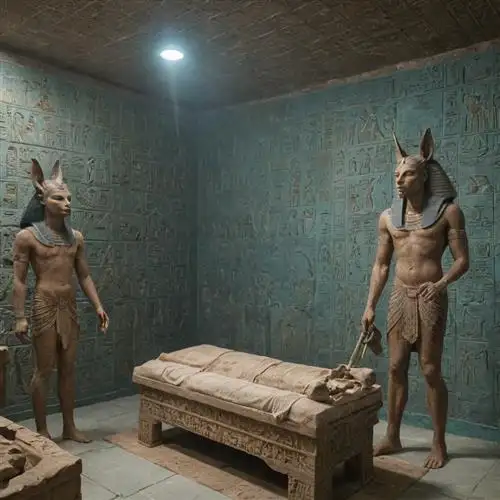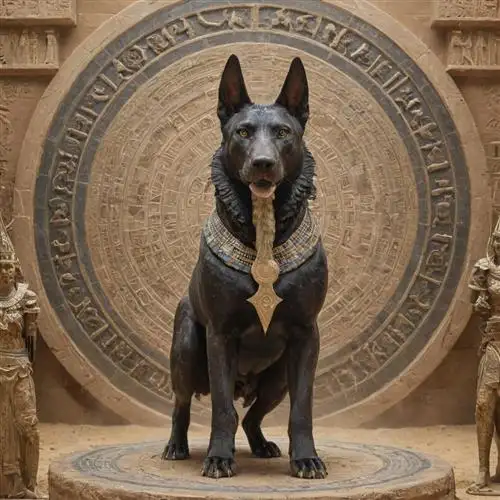
The Enigmatic Origins of Anubis
Anubis, the jackal-headed deity of ancient Egyptian mythology, has captivated the minds of scholars and enthusiasts alike for centuries. This enigmatic figure, believed to be one of the oldest deities in the Egyptian pantheon, has been the subject of extensive research and interpretation. Tracing the origins of Anubis unveils a rich tapestry of cultural, historical, and theological significance that sheds light on the profound impact this deity has had on the ancient Egyptian civilization.
Scholars have long debated the precise origins of Anubis, with various theories and hypotheses emerging over time. Some believe that Anubis may have originated as a regional or local deity, worshiped primarily in certain areas of ancient Egypt, before gradually gaining prominence and becoming a central figure in the national pantheon. Others suggest that Anubis may have been associated with the jackal-like creatures that roamed the deserts and cemeteries, where the dead were often interred.
One of the most intriguing aspects of Anubis' origins is the potential connection between this deity and the earlier funerary deities of ancient Egypt. Scholars have noted similarities between Anubis and the figure of the "jackal of the desert," an entity believed to have been involved in the preparation and protection of the dead. This link has led some researchers to propose that Anubis may have evolved from these earlier funerary traditions, ultimately becoming the central figure in the complex rituals and beliefs surrounding death and the afterlife in ancient Egyptian society.
The iconography and symbolism associated with Anubis further contribute to the mystery of his origins. The jackal-headed figure, often depicted with a human body and holding the crook and flail, has been interpreted as representing various aspects of the afterlife and the transition from life to death. The jackal, a creature associated with the desert and the liminal spaces between the realms of the living and the dead, has been seen as a fitting representation of Anubis' role as the guardian of the necropolis and the protector of the deceased.
The Pivotal Role of Anubis in Egyptian Mythology
Anubis, the jackal-headed deity, has long been revered as a pivotal figure in the pantheon of ancient Egyptian mythology. His role as the guardian of the dead and the embalmer of the deceased has cemented his status as a crucial entity in the intricate web of beliefs that underpinned the ancient Egyptian civilization. The Pivotal Role of Anubis in Egyptian Mythology is a subject that demands a deep exploration, as it sheds light on the profound significance of this enigmatic deity and the enduring influence he exerted on the lives and afterlives of the ancient Egyptians.
At the heart of Anubis' significance lies his role as the protector of the dead and the overseer of the embalming process. As the god of mummification, Anubis was responsible for guiding the deceased through the treacherous journey of the afterlife, ensuring their safe passage and the preservation of their mortal remains. This critical function made Anubis a central figure in the elaborate funerary rituals and ceremonies that were essential to the ancient Egyptian belief system.
Anubis' association with the embalming process also bestowed upon him the role of the guardian of the dead. In this capacity, he was believed to be present at the weighing of the heart, a pivotal moment in the judgment of the deceased. During this ceremony, the heart of the deceased was weighed against the feather of Ma'at, the goddess of truth and justice. If the heart was found to be pure and righteous, the individual was granted passage into the afterlife. Anubis' presence as the overseer of this crucial ritual underscores his vital role in determining the fate of the departed souls.
Moreover, Anubis' connection to the underworld and the afterlife extended beyond his role as the embalmer and the guardian of the dead. He was also believed to be the gatekeeper to the realm of the dead, guiding the souls of the deceased through the treacherous landscape of the underworld and ensuring their safe arrival in the afterlife. This belief system, which was deeply rooted in the ancient Egyptian worldview, further solidified Anubis' status as a central figure in the complex religious and spiritual beliefs of the time.
Anubis and the Mummification Process
Anubis, the ancient Egyptian jackal-headed deity, played a pivotal role in the mummification process, which was integral to the afterlife beliefs of the Egyptians. As the god of embalming and the protector of the dead, Anubis oversaw the complex and meticulous ritual of transforming the deceased into a mummy, ensuring their safe passage to the afterlife.
The mummification process was a multi-step procedure that required the skill and dedication of highly trained embalmers. These specialists were tasked with meticulously removing the internal organs, drying the body, and wrapping it in layers of linen impregnated with resins and oils. Each step of the process was imbued with symbolic meaning and was believed to be guided by the watchful eye of Anubis.
During the mummification, Anubis would be invoked to ensure the successful transformation of the deceased. The embalmers would often wear jackal-headed masks to represent the deity, further emphasizing his presence and authority over the proceedings. Anubis was also believed to weigh the heart of the deceased against the feather of truth, determining their worthiness to enter the afterlife.
The central role of Anubis in the mummification process was not only a matter of practical significance but also a reflection of the deep spiritual and symbolic importance of the ritual. The Egyptians believed that the preservation of the physical body was essential for the soul's journey to the afterlife, and Anubis was seen as the guardian who ensured the successful completion of this transformation.
The mummification process was not limited to human remains; animals, such as cats, baboons, and crocodiles, were also mummified and interred with the deceased, often as symbols of the divine or as companions in the afterlife. Anubis was believed to preside over these animal mummifications as well, further reinforcing his role as the protector of the dead and the custodian of the transition to the next world.
The Iconography and Symbolism of Anubis
The Iconography and Symbolism of Anubis, the Jackal-Headed God of Ancient Egypt, is a captivating subject that holds profound insights into the mystical beliefs and rituals of this ancient civilization. As the guardian of the dead and the protector of the necropolis, Anubis' iconography and symbolism are deeply intertwined with the concept of the afterlife and the journey of the soul.
At the core of Anubis' iconography is the jackal-headed figure, a representation that holds immense symbolic significance. The jackal, a scavenger animal known for its keen senses and ability to navigate the desert, was believed to possess the qualities necessary to guide the deceased through the perilous underworld. The jackal-headed form of Anubis symbolizes his role as the intermediary between the living and the dead, the one who helps the soul cross the threshold from this world to the next.
The color black, often associated with Anubis, is another crucial element of his iconography. In ancient Egyptian beliefs, black was the color of the fertile soil of the Nile River, which was essential for the growth and sustenance of life. However, in the realm of the afterlife, black also represented the mysterious and unknown, the void from which new life emerges. Anubis, as the god of the dead, was thus symbolically connected to this transformative and regenerative aspect of the color black.
Additionally, Anubis is often depicted holding various ritual objects, such as the crook and flail, which were symbols of kingship and divine authority. These objects, when associated with Anubis, underscore his role as the guardian and protector of the deceased, ensuring their safe passage to the afterlife and their proper burial rites.
The iconography of Anubis also extends to his association with specific funerary rites and ceremonies. As the god responsible for the embalming and mummification of the deceased, Anubis was often depicted performing these rituals, with his jackal-headed figure overseeing the process of preserving the body for the journey to the afterlife.
Furthermore, Anubis' iconography is closely linked to the concept of the weighing of the heart, a crucial ritual in the ancient Egyptian afterlife. In this ceremony, the heart of the deceased was weighed against the feather of truth, representing the moral character of the individual. Anubis, as the guardian of this process, was responsible for ensuring the fairness and accuracy of this judgment, which determined the fate of the soul in the afterlife.
The Cult of Anubis and its Enduring Legacy
The Cult of Anubis, the ancient Egyptian god of the dead, has captivated the imagination of scholars and enthusiasts alike for centuries. This enigmatic deity, often depicted with the head of a jackal, played a crucial role in the funerary rituals and the afterlife beliefs of the ancient Egyptians. Beyond his association with death and the underworld, the cult of Anubis has left an indelible mark on the cultural and spiritual legacy of the region.
At the heart of the Cult of Anubis lies the profound reverence and respect the ancient Egyptians held for this guardian of the dead. Anubis was responsible for the embalming and mummification process, guiding the deceased through the treacherous journey to the afterlife. The cult's adherents believed that Anubis would weigh the heart of the deceased against the feather of truth, determining their worthiness to enter the realm of the gods. This ritual, known as the "Weighing of the Heart," was a crucial step in the Egyptian conception of the afterlife, and the cult of Anubis was central to this belief system.
The enduring legacy of the Cult of Anubis can be seen in the numerous artifacts, temples, and funerary complexes that have been unearthed by archaeologists. From the iconic canopic jars used to store the internal organs of the deceased to the grand temple complexes dedicated to Anubis, the influence of this cult can be seen throughout ancient Egyptian civilization. Perhaps most fascinatingly, the cult of Anubis has even influenced modern occult and esoteric practices, with I Channeled Anubis and So Can You being a prime example of the continued fascination with this enigmatic deity.
Beyond the tangible evidence of the cult's existence, the Cult of Anubis has also left a profound impact on the cultural and spiritual imagination of the ancient Egyptians. The god's association with death and the underworld, as well as his role as a psychopomp (a guide of souls), have made him a figure of immense power and significance. The cult's rituals and beliefs have been woven into the very fabric of ancient Egyptian mythology, influencing the way the Egyptians conceptualized the afterlife and the journey of the soul.
















